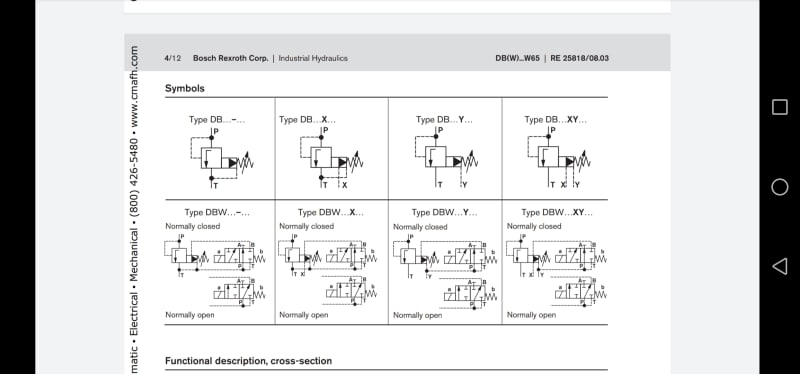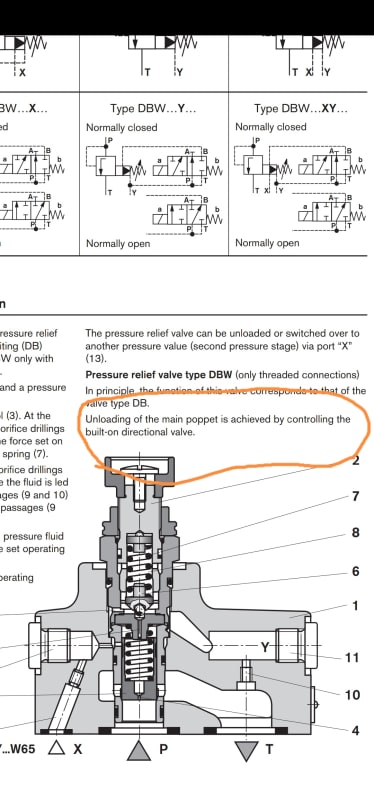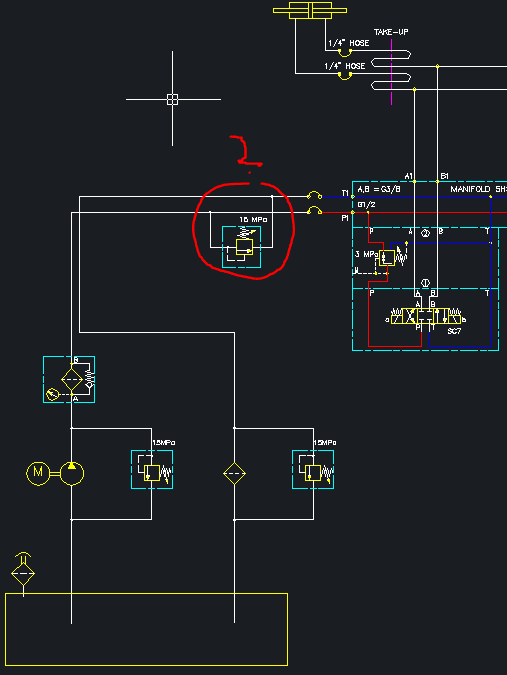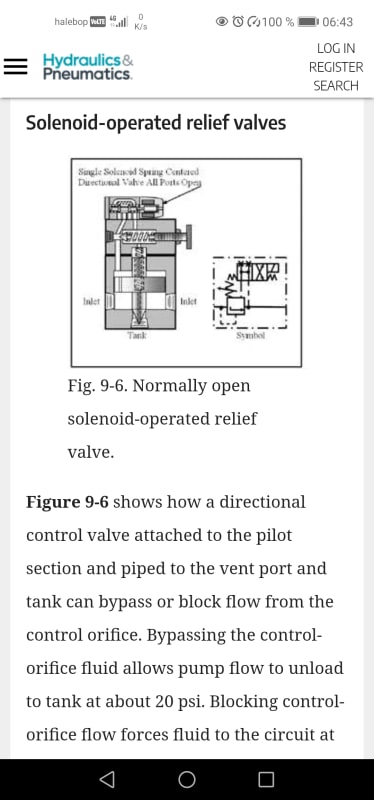The symbol that you provided, is an adjustable pressure-relief valve. These ordinarily don't have a solenoid.
The function that you are describing sounds like a pressure-unloading valve. It can be a plain ordinary two-position single-solenoid spring-return directional valve that allows flow through in one position and blocks it in the other position. It could be either normally-open or normally-closed ... depending on what you want to have happen when the valve power is off. Think about which condition is the "safe" condition. Usually "safe" = "nothing moving" i.e. default condition is vent-to-tank and you have to energise the solenoid if you want pressure. But maybe not.
Watch out for flow capacity. It's going to have a pressure drop across it under full-flow conditions. How much ... depends on the characteristics of the valve that you pick. Where are those characteristics? manufacturer's specifications.
If it's a pilot-operated valve (as opposed to direct-solenoid-actuated), think about where the pilot pressure is going to come from, if you have vented pressure supply to tank.
If the pump is a pressure-compensated variable-displacement pump, think about what happens when it sees low delivery pressure: it goes to max displacement and max flow rate. That is probably not what you want to have happen.
Pressure-unloading valves are used with fixed-displacement gear pumps all the time, to cut down on power consumption and heat build-up under conditions when the rest of the system is not demanding load (both pressure and flow simultaneously).
If the valve is for safety purposes, then this valve may have to be redundant and with fault monitoring. Such valves are available on the market. They require proper integration into the safety system of the machine as a whole.




